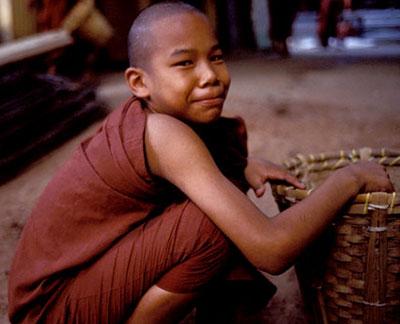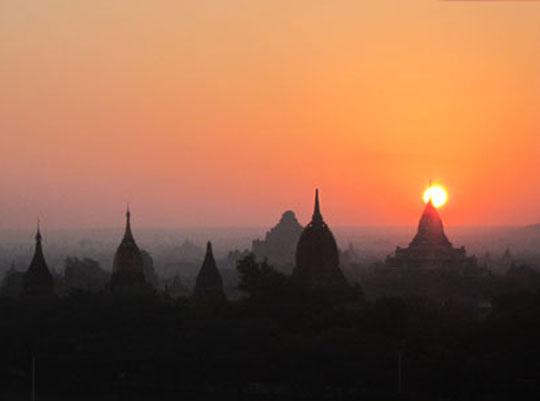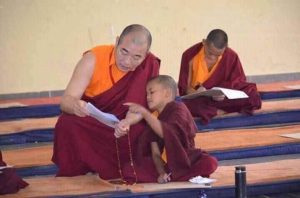Dr. Bill Mak has worked at Kyoto University’s Faculty of Letters and is currently teaching at Hong Kong University.
It was the second time that I went to Myanmar for a meditation retreat. Last year, a friend came back from an extended retreat in Myanmar and told me it was a very fruitful experience. So an idea popped up in my mind: time for another spiritual cleansing!
The place I went to in Myanmar to do meditation retreat for the first time was in a forest. It happened to be an intensive meditation retreat, and everything was arranged meticulously. Participants from various places in the world were exceptionally diligent. The venue was a solemn place, and looked like paradise. It was indeed an ideal place to practice meditation.
This time I returned to Myanmar with similar expectations. At the airport, a Venerable greeted me with a reminder: “Avoid attachment to external conditions in your meditation; put your efforts into cultivating the mind; and, you will need to adapt yourself to different environments”. He suggested that I go to a meditation retreat in the city and decide whether to go to one in the forest at a later time. As it is said in the Daodejing, “The highest virtue is like that of water.” I reckoned that there must be reasons behind the Venerable’s suggestion, and so I said I would comply with whatever the arrangements would be.
I did not realize that my first lesson in this trip to Myanmar was right ahead of me.
Dispirited was how I felt as soon as I arrived at the urban retreat center in Yangon. It was located in a very busy part of the city. There were buildings everywhere. While they were not as closely packed as in Hong Kong, the noise from cars, hawkers, children, and animals of all kinds made it impossible for one to calm down. Furthermore, there was a primary school next to the center. The students there recited texts aloud all day. I would feel irritated even just being there without doing anything, not to say having to meditate. It was a retreat center I had never heard of!
Later on I saw two Koreans and three Japanese who did sitting and walking meditation in the meditation hall very diligently all day. I thought to myself: China lags behind others not only in culture and technology but also meditation; as the only Chinese representative in the center, I would not withdraw that easily; perhaps I should give it a go anyway.
Retreat centers in Myanmar all have similar schedules. Essentially, everyone has to get up at 3:00 a.m. Breakfast is at 6:00 a.m., and lunch is at 10:30 a.m. (really early lunch indeed!). Sleeping time is 9:00 p.m. All the remaining time would be devoted to meditating. In addition, every other morning participants had to report to the meditation master in residence on their progress and seek his advice. The minimum prerequisite for the meditation practice is to receive the Eight Precepts and to fast after noontime. If on any day some kind lay donor donated fruit juice to the center, then we would have an extra “meal” in that afternoon. Otherwise we could only have water for the rest of the day. One day, upon ending my meditation, I discovered a bottle of fruit juice sitting magically next to me. Needless to say, I felt just like a child awarded a candy bar by his teacher!
Although the program might sound like some kind of hardship, the food requirement itself was in fact not much of a challenge. Each day we had soup and eight dishes for lunch. The food was particularly appetizing, and there were plenty of fruits. Occasionally there was dessert, or even ice cream and chocolate. Every day there was a surprise at the dining table waiting for us! Theravada Buddhism does not require a strict vegetarian diet, as the monks would eat whatever the laity offers them. However, my past experience told me not to eat a lot simply on the excuse that I was following the precept of no food beyond noon time, and it was desirable to eat mainly vegetables. I noticed that a fellow practitioner who ate a lot of meat had to do walking meditation all afternoon because he would doze off as soon as he sat down.
Since the retreat lasted ten days only, the veteran meditation master advised me to directly practice “insight meditation” (Vipassana) instead of practicing “concentration” (samatha). According to the Mahasatipatthana Sutta (The Great Discourse on the Foundations of Mindfulness), “insight meditation” means carrying out true and accurate observation of our body (kaya), our feelings (vedana or feelings perceived through the sense organs), our mind (citta or the state of our consciousness), and the mental objects (dhamma), and maintain right mindfulness all the time. These are the four “Foundations of Mindfulness”. Specific ways of the practice, such as observing the rising and falling of the abdomen (primary object of perception) during breathing and the contact between the body and the ground (secondary object of perception) during meditation, vary according to individual meditation masters. My meditation master did not recommend me to practice the “mindfulness of breathing in-and-out” (?n?p?nsati) for the reason that sensation of the object of perception is not obvious, and is relatively hard to practice. The practice should consist of mainly sitting meditation, and walking meditation should be carried out only when sitting meditation cannot be sustained. The key point is to maintain mindfulness at all time, and to slow down all movements as much as possible.
Everything was just too familiar. Very soon the practice became monotonous and tedious. The abdomen rises and falls all the time. What is there to observe? Walking meditation is watching one’s steps as one walks. What is there to gain? At night when I was supposed to be taking rest, I quietly broke the rules by taking out the Chinese bestseller Da Jiang Da Hai I brought along to read greedily under the dim light of my torch.
The days passed by. Every day the veteran meditation master seemed to keep saying the same thing. Doubts began to arise in my mind. Observe the feet. Observe the abdomen. Mindfulness. Mindfulness. Observe the mind. Observe the mind. Are these his script? One day, when I reported my meditation experience to him, I too began reciting my lines: I observed my feet; observed my abdomen; when a wandering thought arose, I generated mindfulness; I observed my mind; I observed my mind. … Suddenly the meditation master said, “No, not samatha (concentration)! When a wandering thought arises, just observe it.”
It was a blow to my mind! I had practiced for so many years, and all the years I had thought wandering thoughts were meant to be eradicated with mindfulness, like monsters in a video game to be annihilated by laser guns. It was not the case. Wandering thoughts were also objects of observation, and the key point of practice is to maintain the process of mindfulness.
At that moment, I suddenly developed a new interest in meditation. Through observing my own wandering thoughts, I acquired a better understanding of myself. However, it requires certain techniques to do the observing, because it is easy to be carried away by the whirlpool of wandering thoughts. Therefore, after observing wandering thoughts as they are, one must gently return to the primary and the secondary meditation objects, i.e. the abdomen and the touch of sitting. As meditation became interesting, I became more focused, and was no longer distracted by the noise outside. The change was dramatic and almost instantaneous.
(to be continued in part 2)














